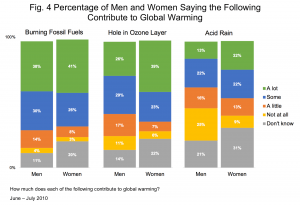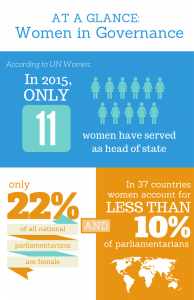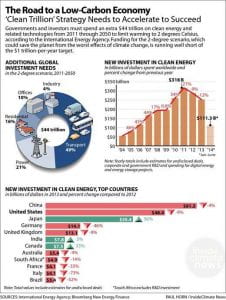 Norgaard and York’s discourse is about interconnection to the exploitation of women and nature, as it relates to politics. Part of the “empirical” evaluation (male/female researchers) focused in on inequality having to do with gender and the impact it have on how women in some states are able to gain positions in parliament which allows them to push for environmental safety. Heavy emphasis on this selection displayed how the roles of women being caretakers of the home, family and the community, plays a part in representation when it came to state environmentalism. Their analysis not only covered how the “gender gap” pertaining to the environment differed from state to state and highlighted “the numerical impact” which largely depends on economic data. But it also showed that “if women tend to be more environmentally progressive, the inclusion of women as well as members of society – as voters, citizens, policy makers and social movement participants – should positively influence behavior” (Norgaard, York; 508). The thought process was that women would have a voice, particularly in national legislative council which could empower a more constructivist balance for gender and the environment. However, (and as stated above) Norgaard and York argued that this view could be an optimistic one, simply because women are indeed seen as “nurturers and caretakers”, less being part of a political body.
Norgaard and York’s discourse is about interconnection to the exploitation of women and nature, as it relates to politics. Part of the “empirical” evaluation (male/female researchers) focused in on inequality having to do with gender and the impact it have on how women in some states are able to gain positions in parliament which allows them to push for environmental safety. Heavy emphasis on this selection displayed how the roles of women being caretakers of the home, family and the community, plays a part in representation when it came to state environmentalism. Their analysis not only covered how the “gender gap” pertaining to the environment differed from state to state and highlighted “the numerical impact” which largely depends on economic data. But it also showed that “if women tend to be more environmentally progressive, the inclusion of women as well as members of society – as voters, citizens, policy makers and social movement participants – should positively influence behavior” (Norgaard, York; 508). The thought process was that women would have a voice, particularly in national legislative council which could empower a more constructivist balance for gender and the environment. However, (and as stated above) Norgaard and York argued that this view could be an optimistic one, simply because women are indeed seen as “nurturers and caretakers”, less being part of a political body.
Following part of their study, Norgaard and York’s outlook of feminist theory saw links of oppression centered on socio-economic factors (gender, race, class). A revelation of “ecofeminists links between gender and environmental behavior of nations-states goes beyond gender equality to social equality more generally” (Norgaard, York 518). The data showed a prevalence in gender inequality and environmental degradation, particularly in poor states such as Singapore, as “wealth and modernization” was above environmental protection. Whereas, states such as Norway, in spite gender differences, women were able to bring their initiative for environmental protection to policy and law. They stated that for this reason, “Norway continues to take the lead on this convention and many other environmental issues and currently has one of the highest rates of participation of women in government in the world…Singapore provides a contrast with Norway in several respects, particularly on levels of gender equality and environmental treaty ratification. Therefore, Singapore’s environmental record is generally poor, even beyond the failure of treaty ratification” (Norgaard, York; 517). They concluded their report by discussing how “global efforts aimed at developing environmental policies should therefore concentrate more on improving the status of women, including especially those efforts aimed at increasing women’s political representation” (Norgaard, York; 519).
The “Paris Agreement” is an example of how women can make a global difference in climate change/ environmental degradation. The agreement is one that was made to prevent global temperatures from rising causing damage due to carbon and other greenhouse gases. Women’s participation was critical to the agreement for many reasons including “1) Women, especially poor women in developing countries, are often the most vulnerable to climate impacts as a result of social structures and existing inequalities, 2) Women are more likely than men to engage in environmentally sensitive behaviors, such as recycling, conserving water and using environmentally friendly products, and 3) UNDP’s 2011 Human Development Report found evidence that when gender inequality is high, forest depletion, air pollution and other measures of environmental degradation are also high” (Durham, Elwell and Elliott, World Resources Institute). Another example of how women make a difference is that of the “Green New Deal” which has a plan to convert/renew energy. Similar to the Paris Agreement, it’s another example of how women right here in the US combat political environmental issues. Women like Rhianna Gunn-Wright and Alexandria Ocasio-Cortez present ways in which we can combat climate change with renewable energy. The women had a heavy hand in the implementation of a bill called the “Green New Deal”. “It seeks to solve the climate crisis by combining quick action to get to net- zero greenhouse gas emissions and 100% renewable energy by 2030 along with an “Economic Bill of Rights” – the right to single-payer healthcare, a guaranteed job at a living wage, affordable housing and free college education” (Germain Starr, T; GP.org).
The above examples links to Norgaard and York’s research in that women advocate for women poor or helpless) in the fight against environmental degradation. In both cases womens participation in politics was to influence high levels of policy making, which helped develop economic balance for the country as well as their communities.
 I chose the following statistic because it illustrates what Norgaard and York’s research found; “societies with greater representation of women in Parliament are more prone to ratify environmental treaties” (Norgaard, York; 512). This image is the opposite of what we should be seeking but it also states the facts, and although it was taken in 2017 still has not changed that much. This means that more women is needed in order for global environmental reform to take place in way that supports the needs of women, not just in the Global South but all states.
I chose the following statistic because it illustrates what Norgaard and York’s research found; “societies with greater representation of women in Parliament are more prone to ratify environmental treaties” (Norgaard, York; 512). This image is the opposite of what we should be seeking but it also states the facts, and although it was taken in 2017 still has not changed that much. This means that more women is needed in order for global environmental reform to take place in way that supports the needs of women, not just in the Global South but all states.
Annotated Bibliography:
Courtney Durham, Natalie Elwell and Cynthia Elliott – November 11, 2016
https://www.wri.org/blog/2016/11/womens-leadership-critical-securing-paris-agreement-essential-fulfilling-it
Courtney Durham, Natalie Elwell and Cynthia Elliott discussed how women in the Paris agreement made a difference in the negotiations. The article also showed how the activists contributions promoted social justice for climate change.



I don’t know if it’s just me or if everyone else experiencing issues with your blog.
It appears like some of the written text in your content are running off the screen. Can someone else
please comment and let me know if this is happening to them
as well? This may be a problem with my browser
because I’ve had this happen previously. Appreciate it
My brother recommended I might like this web site. He was totally right.
This put up truly made my day. You cann’t consider just how
so much time I had spent for this information! Thanks!
Greetings! Very useful advice within this article!
It is the little changes that will make the biggest changes.
Thanks a lot for sharing!
Why vieweгs stіll make use of to rеad news papers when in this technologicаl world all is existing on web?
Also visit my page … Organic Cotton Hoodie
Ӏ ᥙsed to be able to find good info from your blog ρoѕts.
Feel free to visit my web page – Shower Towels
Very good blog! Do you have any hints for aspiring writers?
I’m planning to start my own site soon but I’m a little
lost on everything. Would you propose starting with
a free platform like WordPress or go for a paid
option? There are so many options out there that I’m totally confused ..
Any recommendations? Bless you!
Also visit my blog https://www.cucumber7.com/
Hey there! I simply would like to give you a huge thumbs up for the excellent information you have
got right here on this post. I am returning to your website for more soon.
Hi, i think that i saw you visited my site so i came to “return the favor”.I’m attempting to find
things to improve my site!I suppose its ok to use some of your
ideas!!
Hello there, I discovered your blog by the use of Google whilst searching for a comparable matter,
your site came up, it seems to be good. I have bookmarked it in my google bookmarks.
Hi there, simply became alert to your weblog
thru Google, and found that it’s really informative.
I am gonna be careful for brussels. I’ll appreciate in case you proceed this in future.
Many people can be benefited out of your writing.
Cheers!
Global News Highlights brings together top world events, exclusive articles, and diverse opinions worldwide.
It stands as a hub for readers to follow the heartbeat of global events in just a few minutes.
If you follow government news, arts, athletics, or trade,
you can always discover a concise collection of what’s important.
Without distractions, simply the core of essential reporting.
Here is my webpage :: The best of newspapers
A lot of influencers step outside this network alone. Their influence spreads to music, trends,
promotions, plus mainstream media. Brands team up alongside them for marketing,
audience imitate their moves, and several succeed to build full-scale careers in entertainment.
To sum up, living as a creator represents having the power
to define styles and communities in our digital world.
Feel free to surf to my website :: Valentina Of4
Plenty of influencers expand past TikTok alone. Their impact goes toward the music industry,
clothing, advertising, and even traditional press.
Businesses work alongside them to advertise, audience mimic their moves,
while a few can to build professional lives in entertainment.
To sum up, acting as an influencer means having the power to shape movements and culture in the current
virtual age.
Check out my page – valentina Of4
Excellent web site you have got here.. It’s hard to find high-quality
writing like yours these days. I truly appreciate people like you!
Take care!!
https://cryptobitmart.comCryptobitmart | Online Shopping
with Cryptocurrency
https://applebtcs.com Apple bitcoins | buy apple
products with bitcoin and cryptocurrency
https://applebitcoins.co Apple bitcoins | buy apple products with
bitcoin and cryptocurrency
https://applebitcoins.net Apple bitcoins | buy apple products with bitcoin and cryptocurrency
https://cryptobitmart.comCryptobitmart | Online Shopping with
Cryptocurrency
https://bitgolder.com Bitgolder | Buy Gold and silver with
bitcoin and cryptocurrency anonymously
Адвокат по уголовным делам
I’m gone to tell my little brother, that he should also visit this blog on regular basis to obtain updated from hottest information.
https://apple4bitcoin.com Apple4 bitcoin | buy apple products with bitcoin and cryptocurrency
https://applewithbtcs.com/ Apple4 bitcoin | buy apple products with bitcoin and
cryptocurrency
https://cryptobitmart.comCryptobitmart | Online Shopping with Cryptocurrency
https://bitcryptomarket.com Bitcryptomarket | Online Shopping with Cryptocurrency
https://cryptobitmart.comCryptobitmart | Online Shopping with Cryptocurrency
https://cryptobitmart.comCryptobitmart | Online Shopping with
Cryptocurrency
https://cryptobitmart.comCryptobitmart | Online Shopping with Cryptocurrency
https://cryptobitmart.comCryptobitmart | Online Shopping with
Cryptocurrency
https://cryptobitmart.comCryptobitmart | Online Shopping with Cryptocurrency
https://btcgoldshop.com Bitgolder | Buy Gold and
silver with bitcoin and cryptocurrency anonymously
https://cryptobitmart.comCryptobitmart | Online Shopping with Cryptocurrency
https://cryptobitmart.comCryptobitmart | Online Shopping with Cryptocurrency
Very nice post. I simply stumbled upon your blog and wished to say that I have really enjoyed surfing around your weblog posts.
In any case I’ll be subscribing for your feed and I am hoping
you write once more very soon!
https://cryptobitmart.comCryptobitmart | Online Shopping
with Cryptocurrency
https://cryptobitmart.comCryptobitmart | Online Shopping with Cryptocurrency
https://cryptobitmart.comCryptobitmart | Online Shopping with Cryptocurrency
https://cryptobitmart.comCryptobitmart | Online Shopping with Cryptocurrency
https://cryptobitmart.comCryptobitmart | Online Shopping with Cryptocurrency
Studying at the top U.S. university feels like stepping into
a place where motivation is simply the normal air everyone breathes.
The setting itself pushes you to analyze bolder, read deeper, and defend
your ideas without fear. You quickly realize that the real value of Harvard isn’t just
in the infrastructure or the history, but in the people around
you — students who motivate you, professors who require more from
you than you expect from yourself, and the constant rhythm
of big ideas floating everywhere.
At the same time, Harvard trains you in discipline.
Assignments come fast, discussions move quickly, and you learn how to survive in an environment where strong results is the
baseline, not the goal. But the pressure feels
strangely motivating. You discover new sides of yourself, find unexpected interests,
and build a confidence that stays long after graduation.
In many ways, studying at Harvard is less about getting a
degree and more about transforming how you see the world.
my web page :: Click Here
https://cryptobitmart.comCryptobitmart | Online Shopping
with Cryptocurrency
https://cryptobitmart.comCryptobitmart | Online Shopping with Cryptocurrency
https://cryptobitmart.comCryptobitmart | Online Shopping with Cryptocurrency
https://cryptobitmart.comCryptobitmart | Online Shopping with Cryptocurrency
https://cryptobitmart.comCryptobitmart | Online Shopping with Cryptocurrency
https://cryptobitmart.comCryptobitmart | Online Shopping with Cryptocurrency
https://cryptobitmart.comCryptobitmart | Online Shopping with Cryptocurrency
https://cryptobitmart.comCryptobitmart | Online Shopping with Cryptocurrency
You are so awesome! I do not think I’ve truly read through a single thing like that
before. So great to find another person with original thoughts on this subject matter.
Really.. thank you for starting this up. This site is something that’s needed
on the web, someone with a little originality!
I am really thankful to the owner of this web page who has shared this
great post at at this time.